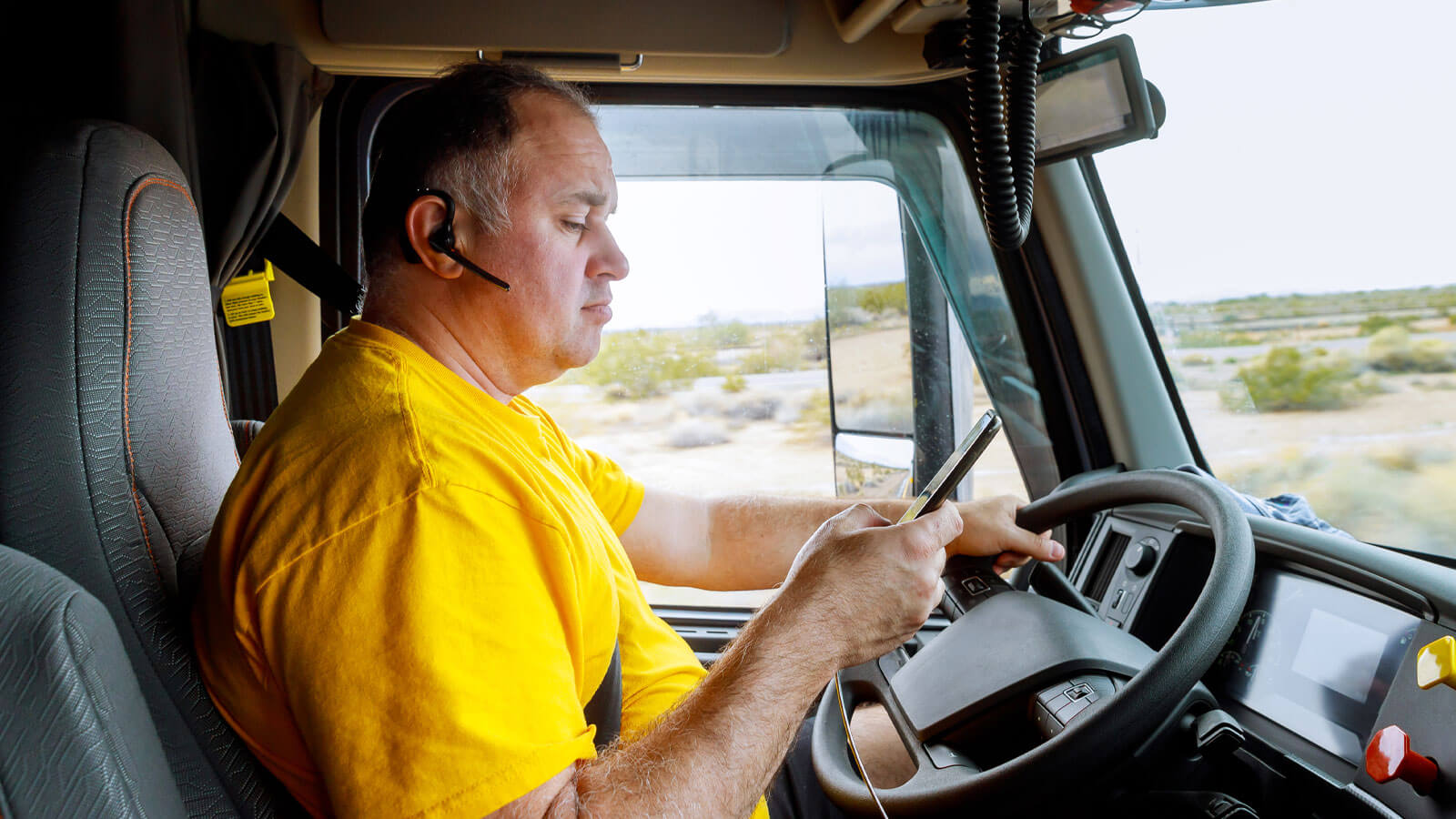Commonly referred to as the “new DUI”, distracted driving has taken roadways by storm over the past decade impacting the whole fleet safety ecosystem. But the problem only continues to worsen: in May 2021, the State Farm® Enterprise Research Department released findings of an online survey where 9 out of 10 drivers admitted to using their smartphone behind the wheel in 2020.
This is particularly risky for organizations whose employees drive as part of their day-to-day work. And it is becoming increasingly clear that today’s business leaders must step up their corporate social responsibility and do more to proactively prevent distracted driving caused by mobile technology. But how can a company solve this problem?
Let’s explore some of the benefits and limitations of common fleet safety options:
Written Policies
Benefits
Many employers have created and adopted a written policy outlining acceptable use of mobile devices behind the wheel to enhance their fleet safety ecosystem. These policies act as “guardrails” for employees – defining employer expectations for appropriate behavior – and give employees the ability to state an understanding of and commitment to following the policy. And they clearly define and communicate the consequences of breaking policy rules.
Limitations
While having a safe driving policy is the first thing a company can and should do, it’s naive to expect a paper contract and reminders to keep drivers from instinctively looking at their phone behind the wheel. The reality is that even if a business drafts a written document designed to prohibit workers from using their devices while driving, that policy alone will not be enough protection to shield an employer’s responsibility in a crash. Written policies often require reinforcement from other tools, including technology.
Telematics
Benefits
Telematics is a method of monitoring an asset (car, truck, heavy equipment or even ship) by using GPS and onboard diagnostics to record movements on a computerized map. The upside is that such technology can monitor location, trip distance, time, idling, fuel consumption, engine performance, seat belt usage and even speeding, hard cornering or harsh braking to give employers a snapshot into an employee’s risky driving behaviors.
Limitations
While telematics solutions offer a glimpse into an employee’s unsafe driving practices and flag concerns, it can be challenging to discern if erratic or impulsive maneuvers were due to mobile device distractions or other unrelated on-the-road incidents (such as a car in front braking suddenly to avoid hitting an animal on the road). Telematics provides important in-vehicle feedback, but only after the fact, so employee coaching is reactive versus proactive. It does nothing to prevent distracted driving and mobile device usage behind the wheel.
In-Vehicle Cameras
Benefits
Mounting a camera inside a vehicle is relatively easy, inexpensive and widespread, and there are many available models on the market. Because cameras digitally document driving behavior, an employer can view this footage, detect device-related distractions and coach workers against it. Employees who know they are being “watched” on camera may in turn change their driving behaviors and be more diligent about device use. On the flipside, however, in-vehicle cameras also record positive driving behaviors, which benefits employees who are following company policies and practicing safe driving.
Limitations
As much as visual recordings can be useful records to companies looking for obvious signs of unwanted driving behaviors, they also create an audit trail should there be a crash. The high volume of reporting and raw data can often render the data unmanageable and nearly impossible to act upon. And given privacy concerns, it’s not unrealistic to expect that some drivers will find workarounds such as masking or unplugging a camera to avoid being recorded.
Mobile Apps
Benefits
Dozens of software apps designed to help prevent distracted driving are available on the consumer market and can be easily downloaded by employees onto their mobile iOS and Android devices from online app stores. Relatively low cost and even free, most apps are easy to use and work in a variety of ways. Some apps block or silence incoming calls and texts when the car is running or has reached a certain speed, others disable a phone completely and still others provide a rating system to score a driver’s trip and pinpoint moments of distracted driving.
Limitations
As plentiful as they are, many of these apps are consumer-focused and contingent on the individual worker to enable them. Employees can therefore elect to opt out or remove them from their devices at will, leaving the company with zero ability to manage such apps at an enterprise level and ensure compliance overall. Many of these apps also tend to be geared more to teenage drivers and offer less sophisticated features than a solution that is specifically designed for business or corporate use. They are unable to do things like deploy and manage thousands of devices, enable or disable individual apps/ functions/numbers, or perform compliance reporting. Thus they open up loopholes in your fleet safety ecosystem.
While these are reasonable options that can detect and reduce the potential for device-related distracted driving accidents, each carry downsides and don’t go far enough to address the total problem. These solutions are often band-aids that tackle specific aspects of the issue, but the real focus needs to be on prevention. As the old saying goes, an ounce of prevention is worth a pound of cure.
Learn more on on the fleet safety ecosystem in this video: The Ecosystem of Fleet Safety and Distracted Driving.

